“How to divorce oneself from the age-old tyranny of thoughts? I remember that the Maharshi has never suggested that I should attempt to force the stoppage of thinking. “Trace thought to its place of origin,” is his reiterated counsel, “Watch for the real Self to reveal itself, and then your thoughts will die down of their own accord.” So, feeling that I have found the birthplace of thinking, I let go of the powerfully positive attitude which has brought my attention to this point and surrender myself to complete passivity, yet still keeping as intently watchful as a snake of its prey.
This poised condition reigns until I discover the correctness of the Sage’s prophecy. The waves of thought naturally begin to diminish.
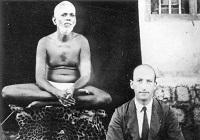
Ramana Maharshi and Paul Brunton, 1931
***
The workings of logical rational sense drops towards zero point.
The strangest sensation I have experienced till now grips me. Time seems to reel dizzily as the antennae of my rapidly growing intuition begin to reach out into the unknown. The reports of my bodily senses are no longer heard, felt, remembered. I know that at any moment I shall be standing outside things, on the very edge of the world’s secret.
Finally it happens. Thought is extinguished like a snuffed candle. The intellect withdraws into its real ground, that is, consciousness working unhindered by thoughts. I perceive what I have suspected for sometime and what the Maharshi has confidently affirmed, that
the mind takes its rise in a transcendental source.”
The Maharshi and His Message – Paul Brunton
On Having No Head a Zero Point
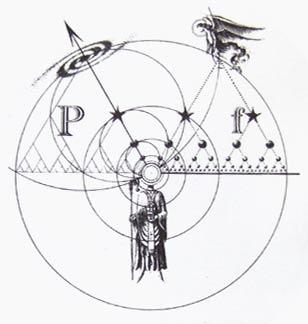
Douglas Harding and Adi Da Samraj



Douglas Harding – 1909-2007
“If the mystic’s progress is hierarchical, and his goal is in any sense a sharing in the divine, then we may look to his account of that goal for light upon the divine nature. And his report is that his outward journey through zones of light and darkness ends, not in the longed-for beatific vision, but in the darkest night of the soul. His quest has failed. He is thrust back to the very beginning. Instead of the enjoyment of God, a virtual atheism; instead of the Whole, the Centre. And this state of utter emptiness is the condition of the final phase of union, when, having ceased to be interested in his own spiritual welfare, he is content to be nothing for the sake of the divine object. Now he returns to serve self-forgetfully all creatures, and to demonstrate to us that the divine is not other than this commonplace world seen in its full hierarchical setting.”
The Mystics Progress – ‘The Hierarchy of Heaven and Earth’ – Douglas Harding
***
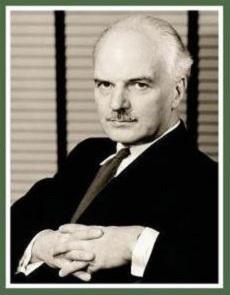
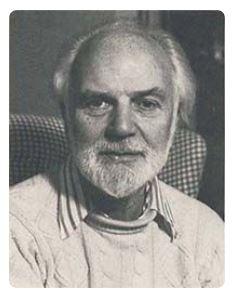
Douglas Harding was born in 1909 in Suffolk, In 1943, aged 34, after some ten years of intense self-enquiry, study and writing, Harding had worked out that he was made of layers, like an onion. In other words, what he was depended on the range of the observer. As a result of his studies, Harding was convinced that he was human only at a certain range. Closer to, he was cellular, molecular, atomic… Further away he appeared as the human species, Life, the planet, the star, the galaxy… At very close range, therefore, he was almost nothing. It made sense to him therefore that at centre he was a mysterious ‘nothingness’.
In the mid-1930s Harding moved to India with his family to work there as an architect. When the Second World War broke out, Harding’s quest to uncover his identity at centre – his True Identity – took on a degree of urgency. Aware of the obvious dangers of war, he wanted to find out who he really was before he died.
One day Harding stumbled upon a drawing by the Austrian philosopher and physicist Ernst Mach. It was a self-portrait – but a self-portrait with a difference. Most self-portraits are what the artist looks like from several feet – she looks in a mirror and draws what she sees there. But Mach had drawn himself without using a mirror – he had drawn what he looked like from his own point of view, from zero distance.
When Harding saw this self-portrait the penny dropped. Until this moment he had been investigating his identity from various distances. He was trying to get to his centre by peeling away the layers. Here however was a self-portrait from the point of view of the centre itself. The obvious thing about this portrait is that you don’t see the artist’s head. For most people this fact is interesting or amusing, but nothing more. For Harding this was the key that opened the door to seeing his innermost identity, for he noticed he was in a similar condition – his own head was missing too. At the centre of his world was no head, no appearance – nothing at all. And this ‘nothing’ was a very special ‘nothing’ for it was both awake to itself and full of the whole world.
In 1943, he stopped thinking and speculating and simply looked back at himself. He noticed that from his own point of view he was headless. He was looking not out of two eyes but a ‘single eye’, a boundless openness – an openness that was self-evidently aware, and was also full of the whole world. Here was direct experience of his central identity, his True Self. No longer did he have to rely on speculation. Following this he spent the next 8 years exploring the scientific, philosophical, psychological, religious… implications of his discovery, presented in his book The Hierarchy of Heaven and Earth, described by C. S. Lewis (who wrote the preface) as “a work of the highest genius”. This book was published by Faber & Faber in 1952. After taking time off from his profession, Harding then returned to architecture.
Source: Wikipedia – Headless.org

Adi Da Samraj

The “First Room” Trilogy – Adi Da Samraj
***
Adi Da Samraj: All the time that I appear to be with you, even though there isn’t really a center among you except your own face, I continually realize that center in your faces that moves in the sphere, unrecollected, of your appearance, and play upon it, so that you seem to find in me a center, a one, an individual, a case of Enlightenment, and continue to play upon you in your bodies until that face in you is sublimed beyond your hairs, being the only thing changing.
This face is not visible to me. You cannot see your own head, except by reflection. All the time you are arms and legs and trunk, breathing and beating and desiring and moving, but no face, except to others, from time to time reflected in a mirror, in imagery, in dreams, in recollection, in the mind, but never really, always a medium between yourself and your own face, never your own face directly. None of you has ever seen your own face, only imaged it. Has anyone seen it? Never. And you never will. – See full talk below
ZERO POINT
– Adi Da Samraj
“People continue to think that all this Life is leading somewhere in some grand evolutionary design and they continue to thrive on the search with “what’s next”. But the more sensitive you become, the more you become aware of this structure of limitation. It’s only when consciousness returns to the zero, moment to moment that this insight begins to break the bondage. It’s only when you’ve become so limited, when you have no options truly that you begin to understand what’s going on and what you’re up to.
When you realize that you truly are confined and that there is this one quality of knowledge, experience and existence from moment to moment, then are you are beginning to understand. When you realize you can’t play your games any more, you can’t depend on your games because you know all your games are essentially based on the same impulse, the same structure. You realize ultimately the same vision, the same cognition of the search. You realize you are truly locked in to this one form of existence, which is ordinary suffering, the search. It’s in that entrapment, that isolation of real recognition, that the whole process begins to be undone.
That’s why The Spiritual Masters continue to stress that there is a crisis in consciousness involved in spiritual life, because you must come to this zero point in which you see the one thing you are always doing, the one state lived, in which you see the search as your very condition. It’s only when you’ve returned to this condition of suffering without recourse, when you have fallen into your own limitation, that True Insight and Understanding can arise as The Spiritual Master has described it. So there must be a crisis.” – Adi Da Samraj, The Aletheon, The Way of Zero Bargaining,
Within the globally-extended context of the human Great Tradition (or the totality of all of the cultures of the first six stages of life), there is an historically presumed primal divide–or a fundamental historical, philosophical, and aspirational conflict and division-between the cultures associated with the ideal of infinity and the cultures associated with the ideal of zero.
Historically, philosophically, and by means of various characteristic “methods” of seeking (or applied aspiration), the cultures of infinity seek to achieve, or return to, or re-assert a union between the ego-“I” (or the separate “self’-identity) and the infinite state that both includes (or pervades) and transcends the total “world”.
Historically, philosophically, and by means of various characteristic “methods” of seeking (or applied aspiration), the cultures of zero seek to achieve, or return to, or re-assert the status of zero or the non-conditional state that entirely precedes the ego”I” and the “world”.
The cultures of infinity are, finally, epitomized by infinity-based sixth stage traditions, such as Advaita Vedanta, wherein it is asserted that the existential “ground” (or the non-conditional “root”-state) of the ego-“I” is identical to the infinite state that includes (or pervades) and transcends the total “world”.
The cultures of zero are, finally, epitomized by zero-based sixth stage traditions, such as are evident throughout the historical schools of Buddhism, wherein it is asserted that, transcendentally prior to the ego-“I” and the apparent “world”, there is a nonconditional state that is intrinsically empty (or void) of “causational” and substantive characteristics, and that is, therefore, identical to the status of zero.
The fundamental proposition of the cultures of infinity is like a mathematical proposition that states the number one-or any quantitative number at all-is essentially and existentially equal to infinity.
The fundamental proposition of the cultures of zero is like a mathematical proposition that states the number one-or any quantitative number at all-is essentially and priorly equal to zero.
The “root”-idea of the cultures of infinity is the idea that “something” equals “everything”.
The “root”-idea of the cultures of zero is the idea that “some thing” equals “nothing”.
The intrinsic weakness of the cultures of infinity is the fear of “nothingness”, and the chronically urgent need and tendency to avoid the state or result that is “nothingness”.
The intrinsic weakness of the cultures of zero is the fear of “everything” (or of the “world”-totality of conditionally arising appearances), and the chronically urgent need and tendency to avoid the “everything” of the “world”-totality.
Full talk:
True Lovers
The Gesture, The Argument, the Service of God-Realization in Ordinary Beings.
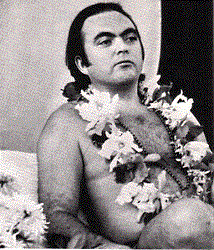
A talk by Heart-Master Da, July 12, 1976
Adi Da Samraj: Devotees submit themselves to the God-form through one another, through ordinary relations, all the while remembering the Divine, in some cases the Divine in this appearance, this human gesture, with legs and trunk and arms and head, with face, with all perception, with all knowledge, above and below. Such fortunate people are the intimates of such a one. It is not necessary to be intimate with that form to engage in such a practice of Truth, but it is fortunate.
And so these intimates of this necessity, particularly the lovers of this one, become the expressions, by intimacy, of this birth, become the only appearance, become the only figurement, the only argument, of its necessity or form, and seem to be it without self-consciousness, and therefore serve others without argument of an ordinary kind. The Ashram as a whole, the church of this enjoyment of my intimacy, becomes the aura, embodied, of this unnecessary and actual non-birth, so that the only birth of this one, who is not one in concentration or in fact but one in you, becomes knowable and factual in devotees. It is only in the next generation beyond this body that the factuality of this circumstance becomes apparent. There is therefore no gesture, no accomplishment, no fulfillment, of this expression in this life. This life becomes a sacrifice to its own expression. Having no center in itself, it becomes many, centered nowhere but expressed in everywhere.
The gesture of the God-man in human form is sexual, is an instigation, a suggestion, an intrusion, in the midst of human life that produces the birth, in the form of those already born, of his own domination. You see how it occurs? Probably not. But that is the way it occurs. And it never is fully expressed, never acknowledged, until the complete disappearance of the apparent bodily form of the born one, or the God-man. The birth, the expression, the appearance, of the God-man implies its, his, her own death, sacrifice, before there is any feeling at large for the Divine. Because as long as this apparently born one continues to exist, the eyes turn inward, turning toward the center, toward the cultic object or to some withinness that has a focus. It is only when the God-man is dissolved in his or her appearance, is completely gone, has no longer any focus even in devotees in a place, it is only then that expression that is knowable to men and women at large communicates itself, becomes knowable, only when the reflection turns outward and becomes Radiant.
And so devotees, or those intimate with this birth, which is apparent only, become the form, or the body, in many without a center, without a single one. If they all stood in a circle looking to the center, they would see nothing except someone on the other side. And yet to those who view them, who live with them compassionately, they are, for the first time, the bodily expression, the incarnation, of God, without a center. The incarnation of devotees is the birth.
And so you can see that the birth of the God-man implies sacrifice, or death, of the God-man, and it must occur quickly. Such a one cannot live to be an old, old man or woman. Such a one can live only as long as it takes to prepare the being of devotees, of lovers. Oh, perhaps before that occurs, such a one may begin to look old, to accumulate years, and those who desire that objective person may resist their knowledge long enough that he or she may become old in years, and only begin to become sensitive to the Teaching, to the transforming Influence, when it seems that, well, he’s lived long enough, and suddenly they begin to become Enlightened, and he hurries, or she hurries, to be dead. This hurrying can begin very early in the life of such a one. It can occur in the middle of life, it can occur in the middling of life, fifties, sixties, or seventies of years, or it can occur very late in life. Its persistence depends entirely on the response of devotion.
But when that preparation is sufficient—and this is not knowable to devotees—it is then that this appearance is vanished, like a magic object given to you in a devotional afternoon. The disappearance of the God-man is therefore sudden—whenever it occurs it is sudden. Its significance is that the aura of his or her communication moves through his or her lovers, only through them. And the entire process depends entirely, then, without a center, on the process of the community, on the process of the gathering of devotees, who no longer have a center in the case of the death of the God-man, but who have a burden of Light, who suffer or enjoy a speed in them that they could not recollect or engage while that one lived.
So—all the time that I appear to be with you, even though there isn’t really a center among you except your own face, I continually realize that center in your faces that moves in the sphere, unrecollected, of your appearance, and play upon it, so that you seem to find in me a center, a one, an individual, a case of Enlightenment, and continue to play upon you in your bodies until that face in you is sublimed beyond your hairs, being the only thing changing. Perhaps this is the time for my disappearance—it is not a threat—perhaps this is the time. Perhaps there is another time, but you will not know it, and I will not prophesy it, because it is not effective upon any single one. It is effective upon you. The event is not my disappearance, but your revelation.
Taking that into account, this is obviously not the moment! (Laughter.) But it could come any time. I’m always hopeful for it.
These extremities below the throat are not desirable to me. This face is not visible to me. You cannot see your own head, except by reflection. All the time you are arms and legs and trunk, breathing and beating and desiring and moving, but no face, except to others, from time to time reflected in a mirror, in imagery, in dreams, in recollection, in the mind, but never really, always a medium between yourself and your own face, never your own face directly. None of you has ever seen your own face, only imaged it. Has anyone seen it? Never. And you never will.
You may see yourself shoulders and below. You may see all of this bodily life. You may see everything below the throat. But you may never see your face, except by mediumship, except by reflection in others or in some device like a mirror, which is not your own face but only an interpretation, an illusion that suggests your own objectification.
Release yourself from this objectification, from this knowledge by suggestion that you exist independently. Do not believe your own face. Only be seen by others. Don’t desire to be seen, but be seen in spite of the desire. Then you may be known radiantly, only when you forget it, when you give up all reflections by knowledge, by understanding, and become faceless, with only this body receding from it, knowing all beings not from face but from the heart, which is without perception, reflected in the face, but not known by you.
In that case, you may become Divine in your agency and known Godly to ordinary people, without self-consciousness. This is the function of the Guru. It is the function of his devotees, or his lovers, after death, after preparation. Know that that preparation is not complete until the God-man dies in his body, and the implication of the birth of the God-man is his death, not to be regretted like an event that is over, but it be known as the sign that his or her birth has finally occurred.
The life of the God-man is like the interim in the womb of an ordinary man or woman. The death of the God-man is like the birth of an ordinary man or woman, in which the case the God-man finally achieves form without self-consciousness in the bodies, head, arms, trunk, and legs of devotees, true devotees. Spurious individuals will make claims for themselves, become self-conscious, trying to replace the center. But those who are the lovers of that one, who have known that one truly, will be completely free of self-consciousness, free of strategy, will live that process in relationship, communicated in person by the God-man without person, will live that in relationship to one another without face, without consulting the mirrors of consciousness or this world. In that case they may become the media, the gesture, the argument, that is the service of God-Realization in ordinary beings.
See more: Zero Point on Beezone